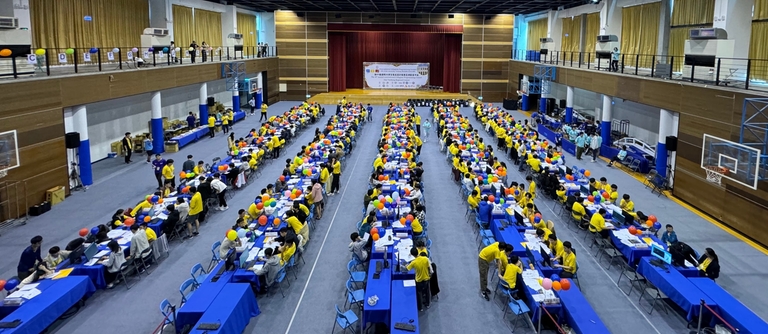Hello Codeforces!
I am pleased to invite you to participate in 2024 ICPC Asia Taichung Regional Contest (Unrated, Online Mirror, ICPC Rules, Preferably Teams), which will be held on Nov/24/2024 10:05 (Moscow time). This is an online mirror contest for the 2024 ICPC Asia Taichung Regional Contest, and the official offline contest was conducted on November 17th, 2024. The duration of the contest will be 5 hours and the contest is best for teams of three people. The mirror will use the ICPC format.
The contest tasks are proposed by the task authors (baluteshih, waynetuinfor, skylinebaby,samsam2310, hank55663, ltf0501, Jeffrey, Shik, tmt514, Bangye Wu, kasuistry, and Peter Rossmanith), prepared and polished by the judge team (Regional Contest Director Ling-Ju Hung, Chief Judge Peter Rossmanith, kasuistry, Hung-Lung Wang, baluteshih, waynetuinfor, hank55663, cthbst, Sylveon, CindyLinz, marmot0814, tmt514), and tested by the tester team (olmrgcsi, oToToT, jeeeerrrpop, nikilrselvam, Vince729, applepi216). The judges appreciate the testers for their valuable feedback!
We would like to thank MikeMirzayanov for creating the greatest Codeforces platform, and many, many, many helps for making this online mirror contest possible!

This is a photo of the contest venue. Photo Credit: Prof. Jinn-Shyong Yang.
On behalf of the 2024 ICPC Asia Taichung Regional Contest Judge Team, we hope you enjoy this contest and have fun!
Of course, this contest will be unrated.
Updated: the editorial has been released! Please refer to the link in the contest's local website.








 , we can focus on counting the number of
, we can focus on counting the number of  time. Although I believe it is achievable using
time. Although I believe it is achievable using  solutions.
solutions. to be the largest index
to be the largest index  occurs in
occurs in  .
.
